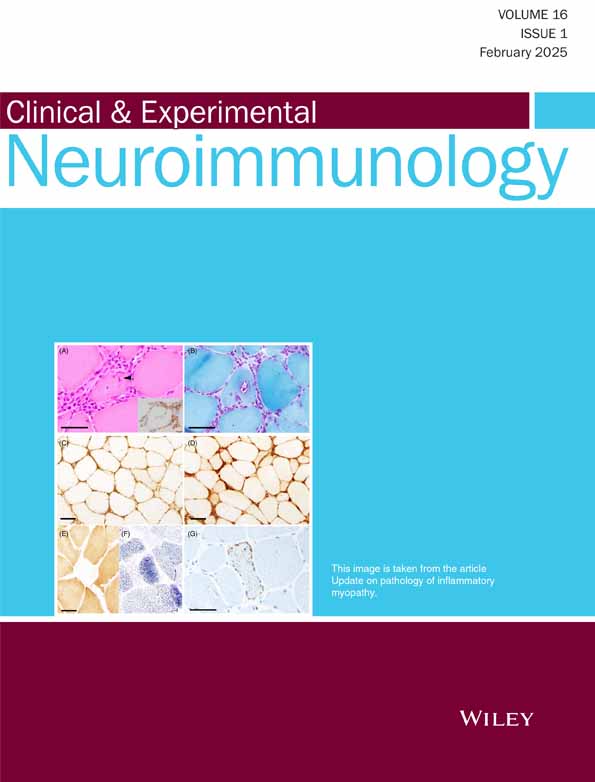Successful treatment with plasmapheresis of severe Bickerstaff brainstem encephalitis with high cerebrospinal fluid CXCL-10 levels after COVID-19 infection: A case report
Abstract
Background
Bickerstaff brainstem encephalitis (BBE) is an autoimmune disease affecting the brainstem, typically caused by a prior infection. However, BBE after coronavirus disease 2019 (COVID-19) infection is rare. Here, we present a severe case of BBE after COVID-19 infection, highlighted by increased levels of CXCL-10.
Case Presentation
A 28-year-old woman presented with symptoms of cold and fever lasting 5 days, accompanied by numbness, weakness and unsteadiness in the distal parts of her limbs before being admitted. Upon admission, her condition was classified with a Glasgow Coma Scale score of E1V1M4, absence of bilateral ocular cephalic reflexes, eyes fixed in the midline position and pathological reflex in lower limbs. COVID-19 antigen tests were positive, and cerebrospinal fluid CXCL-10 levels were elevated. Positive serum anti-GQ1b antibodies, along with other clinical findings, confirmed the diagnosis of BBE. Initial treatment with high-dose intravenous immunoglobulin was ineffective, leading to mechanical ventilation on day 2 from admission. Additional steroid pulse therapy and plasmapheresis were initiated on day 7. Communication abilities were restored by day 19, and the patient was extubated on day 21. Continuous alleviation of symptoms was observed, with no sequelae at discharge on day 42.
Conclusions
BBE related to COVID-19 with high CXCL-10 levels can become severe. However, early intensive immunotherapy, including plasmapheresis, might result in favorable prognosis.
CONFLICT OF INTEREST STATEMENT
The authors declare no conflict of interest.
Open Research
DATA AVAILABILITY STATEMENT
The data that support the findings of this study are available on request from the corresponding author. The data are not publicly available due to privacy or ethical restrictions.




